VW Touran vs Skoda Elroq - Differences and prices compared
Costs and Efficiency:
Price and efficiency are often the first things buyers look at. Here it becomes clear which model has the long-term edge – whether at the pump, the plug, or in purchase price.
Skoda Elroq has a distinct advantage in terms of price – it starts at 29100 £, while the VW Touran costs 35400 £. That’s a price difference of around 6338 £.
Engine and Performance:
Power, torque and acceleration say a lot about how a car feels on the road. This is where you see which model delivers more driving dynamics.
When it comes to engine power, the Skoda Elroq has a significantly edge – offering 340 HP compared to 150 HP. That’s roughly 190 HP more horsepower.
In acceleration from 0 to 100 km/h, the Skoda Elroq is decisively quicker – completing the sprint in 5.40 s, while the VW Touran takes 8.90 s. That’s about 3.50 s faster.
In terms of top speed, the VW Touran performs somewhat better – reaching 209 km/h, while the Skoda Elroq tops out at 180 km/h. The difference is around 29 km/h.
There’s also a difference in torque: Skoda Elroq pulls significantly stronger with 679 Nm compared to 360 Nm. That’s about 319 Nm difference.
Space and Everyday Use:
Whether family car or daily driver – which one offers more room, flexibility and comfort?
Seats: offers more seating capacity – vs .
In curb weight, VW Touran is clearly perceptible lighter – 1520 kg compared to 1953 kg. The difference is around 433 kg.
In terms of boot space, the VW Touran offers clearly more room – 834 L compared to 470 L. That’s a difference of about 364 L.
In maximum load capacity, the VW Touran performs evident better – up to 1980 L, which is about 400 L more than the Skoda Elroq.
When it comes to payload, VW Touran slightly takes the win – 601 kg compared to 531 kg. That’s a difference of about 70 kg.
Who comes out on top?
Overall, the Skoda Elroq shows itself to be is largely superior and secures the title of DriveDuel Champion.
It convinces with the more balanced overall package and proves to be the more versatile choice for everyday use.
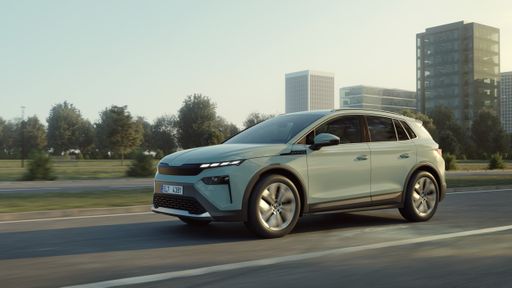 @ Škoda Auto a.s. / Škoda Storyboard
@ Škoda Auto a.s. / Škoda Storyboard
Skoda Elroq
Costs and Consumption
View detailed analysis
Engine and Performance
View detailed analysis
Dimensions and Body
View detailed analysis
VW Touran
The VW Touran is a sensible family people‑carrier that mixes practical packaging with tidy, German-built refinement, making everyday life with kids and shopping feel a lot less chaotic. If you want a reliable, no-nonsense companion that drives with surprising poise and values usefulness over flash, the Touran is a very persuasive choice.
details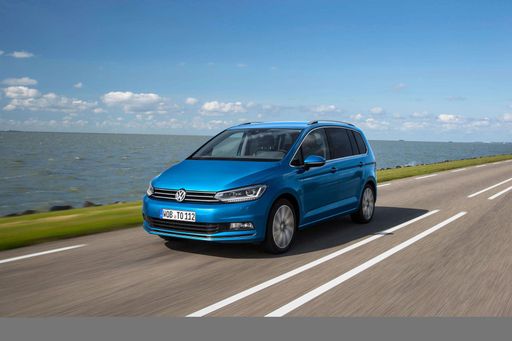 @ Volkswagen AG / VW Media
@ Volkswagen AG / VW Media
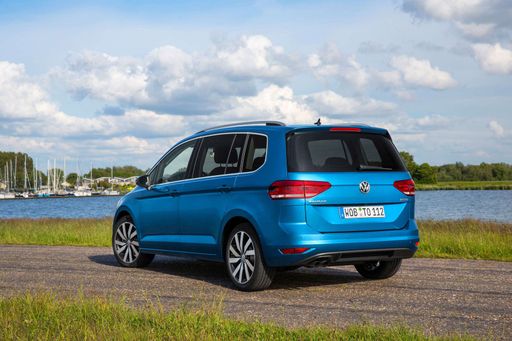 @ Volkswagen AG / VW Media
@ Volkswagen AG / VW Media
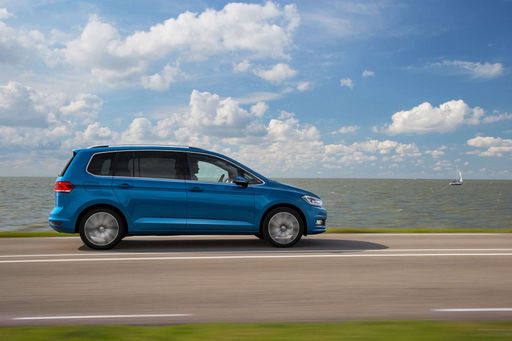 @ Volkswagen AG / VW Media
@ Volkswagen AG / VW Media
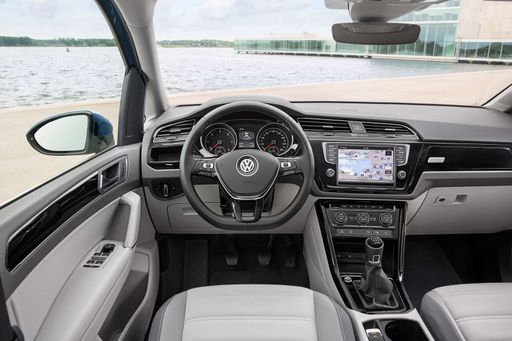 @ Volkswagen AG / VW Media
@ Volkswagen AG / VW Media
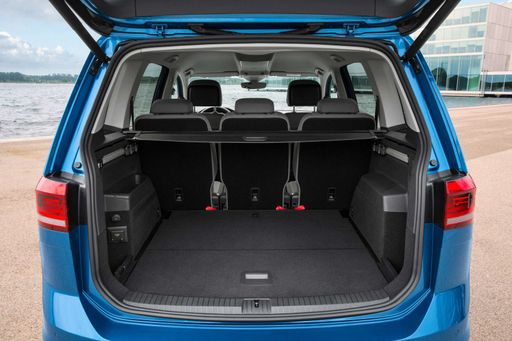 @ Volkswagen AG / VW Media
@ Volkswagen AG / VW Media
Skoda Elroq
The Skoda Elroq is a cleverly packaged family SUV that mixes roomy practicality with sharp, modern looks, making it an easy pick for buyers who prefer common sense over flash. On the road it's composed and user-friendly, with thoughtful interior details that turn everyday driving into something pleasantly efficient — a sensible companion with a wink.
details @ Škoda Auto a.s. / Škoda Storyboard
@ Škoda Auto a.s. / Škoda Storyboard
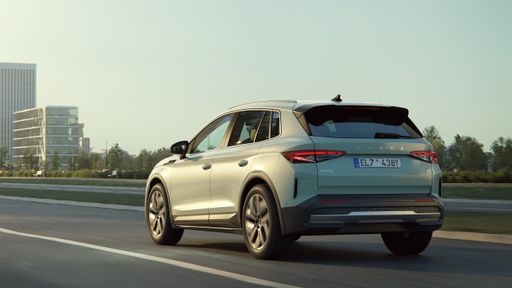 @ Škoda Auto a.s. / Škoda Storyboard
@ Škoda Auto a.s. / Škoda Storyboard
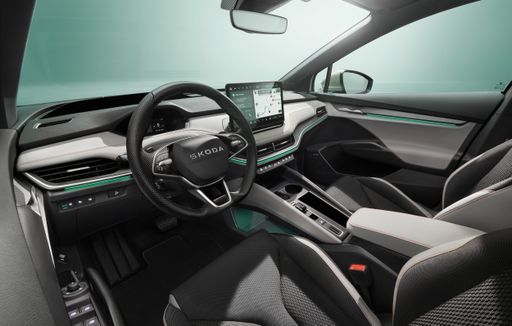 @ Škoda Auto a.s. / Škoda Storyboard
@ Škoda Auto a.s. / Škoda Storyboard
 @ Volkswagen AG / VW Media
@ Volkswagen AG / VW Media
|
 @ Škoda Auto a.s. / Škoda Storyboard
@ Škoda Auto a.s. / Škoda Storyboard
|
|
|
|
Costs and Consumption |
|
|---|---|
|
Price
35400 - 43900 £
|
Price
29100 - 45500 £
|
|
Consumption L/100km
5.2 - 6.5 L
|
Consumption L/100km
-
|
|
Consumption kWh/100km
-
|
Consumption kWh/100km
15.2 - 16.5 kWh
|
|
Electric Range
-
|
Electric Range
377 - 573 km
|
|
Battery Capacity
-
|
Battery Capacity
52 - 79 kWh
|
|
co2
136 - 149 g/km
|
co2
0 g/km
|
|
Fuel tank capacity
58 L
|
Fuel tank capacity
-
|
Dimensions and Body |
|
|---|---|
|
Body Type
MPV
|
Body Type
SUV
|
|
Seats
5
|
Seats
5
|
|
Doors
5
|
Doors
5
|
|
Curb weight
1520 - 1631 kg
|
Curb weight
1953 - 2268 kg
|
|
Trunk capacity
834 L
|
Trunk capacity
470 L
|
|
Length
4527 mm
|
Length
4488 mm
|
|
Width
1829 mm
|
Width
1884 mm
|
|
Height
1668 mm
|
Height
1608 - 1625 mm
|
|
Max trunk capacity
1980 L
|
Max trunk capacity
1580 L
|
|
Payload
590 - 601 kg
|
Payload
470 - 531 kg
|
Engine and Performance |
|
|---|---|
|
Engine Type
Petrol, Diesel
|
Engine Type
Electric
|
|
Transmission
Manuel, Automatic
|
Transmission
Automatic
|
|
Transmission Detail
Manual Gearbox, Dual-Clutch Automatic
|
Transmission Detail
Reduction Gearbox
|
|
Drive Type
Front-Wheel Drive
|
Drive Type
Rear-Wheel Drive, All-Wheel Drive
|
|
Power HP
122 - 150 HP
|
Power HP
170 - 340 HP
|
|
Acceleration 0-100km/h
8.9 - 10.8 s
|
Acceleration 0-100km/h
5.4 - 9 s
|
|
Max Speed
195 - 209 km/h
|
Max Speed
160 - 180 km/h
|
|
Torque
250 - 360 Nm
|
Torque
310 - 679 Nm
|
|
Number of Cylinders
4
|
Number of Cylinders
-
|
|
Power kW
90 - 110 kW
|
Power kW
125 - 250 kW
|
|
Engine capacity
1498 - 1968 cm3
|
Engine capacity
-
|
General |
|
|---|---|
|
Model Year
2024 - 2025
|
Model Year
2025
|
|
CO2 Efficiency Class
E
|
CO2 Efficiency Class
A
|
|
Brand
VW
|
Brand
Skoda
|
What drive types are available for the VW Touran?
The VW Touran is offered with Front-Wheel Drive.
The prices and data displayed are estimates based on German list prices and may vary by country. This information is not legally binding.
